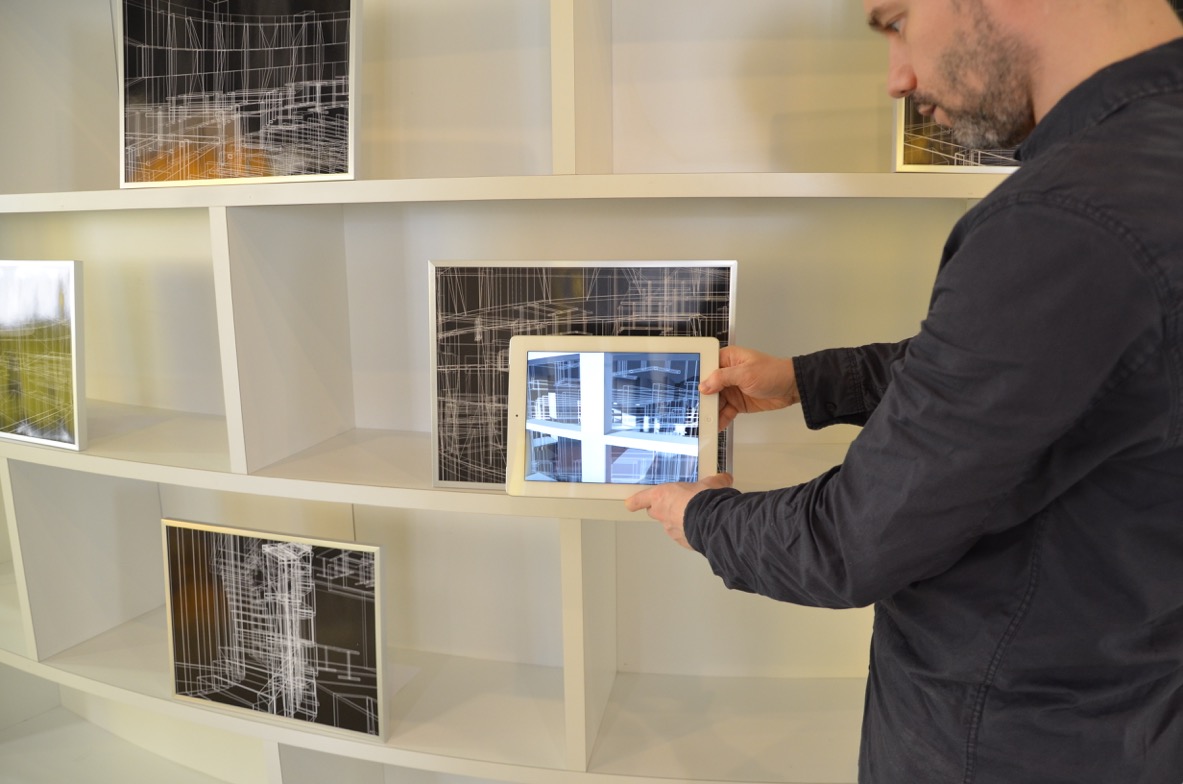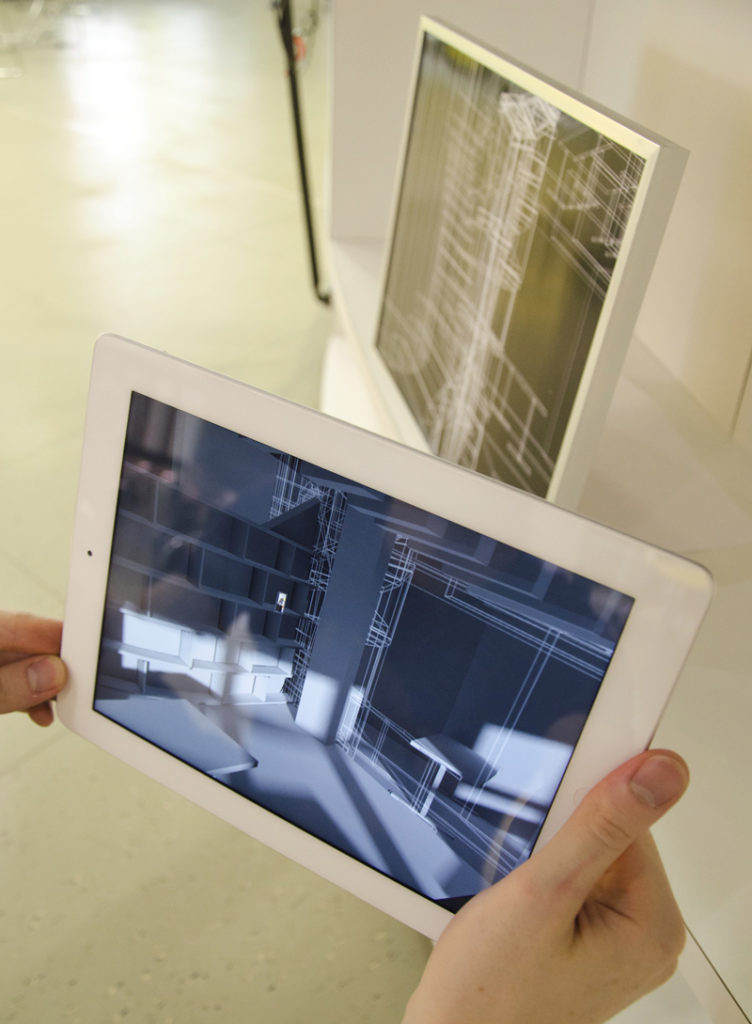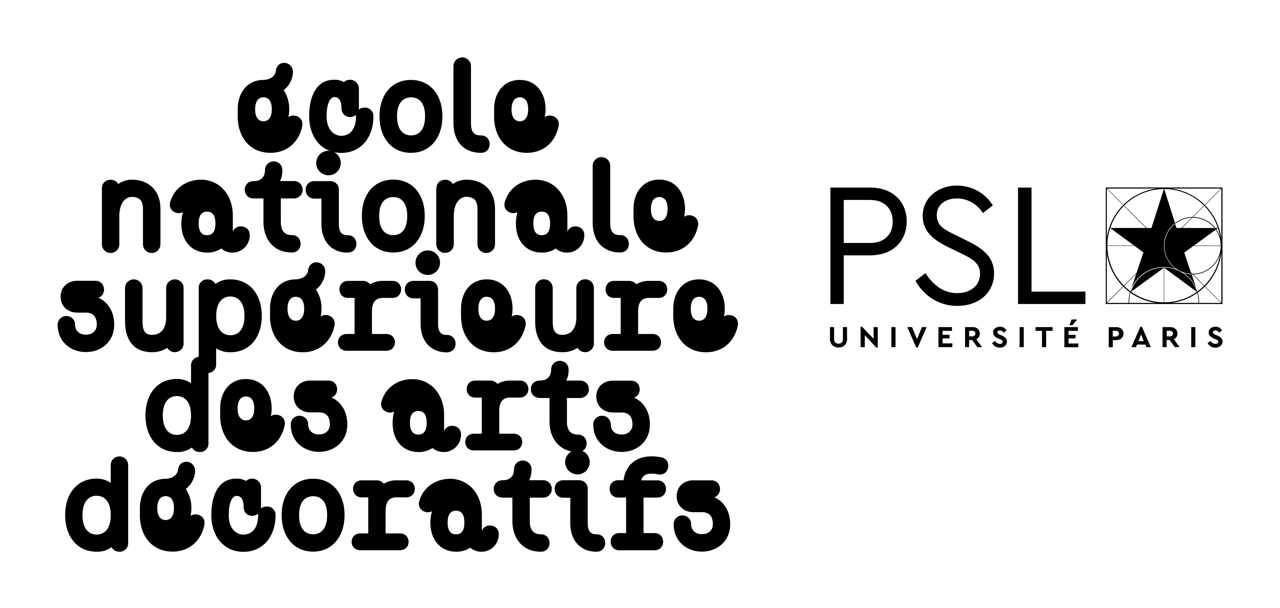By Dominique Cunin (2013)

The augmented reality technique, in its classical form, seems to be renewed with mobile screens. Indeed, as they incorporate a camera and have sufficient computing power, these mobile “screen computers” avoid the separation hitherto necessary between the camera and the screen in augmented reality devices. Carottages (core drilling) is an artistic suggestion for the implementation of this technique. It is about considering the “markers”, the images that are used as references in the filmed space, as something other than simple functional elements. The space in which the viewer is located is reconstructed in the form of a 3D model from which images are generated, offering different points of view on the building. These images only show white segments on a black background. They are geometric and technical representations that are difficult to read. The mobile screen makes it possible to reveal a portion of the space in augmented reality over each image: an area defined by the edges of the image cuts deep into the limits of a “realistic” representation comprising lights and shadows, offering an unprecedented look at the architecture.

© Dominique Cunin
Credits
EnsadLab, EMeRI (dir. Jean-Louis Boissier), Mobilisable 2013 exhibition, Labo de l’édition Paris.
